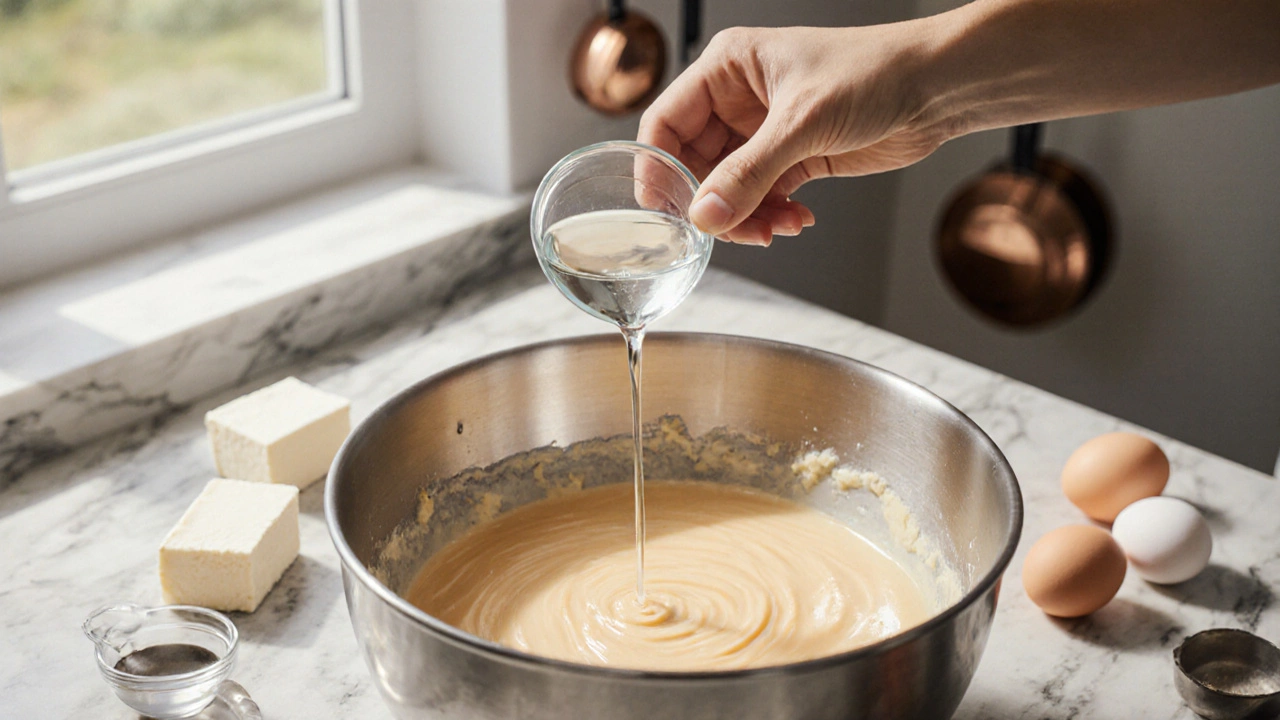Why Add Vinegar to Cheesecake? The Science Behind the Secret Ingredient
Discover why a splash of vinegar is a secret weapon in cheesecake, how much to use, best types, substitutes, and troubleshooting tips for flawless results.
When working with acidic ingredient cheesecake, a cheesecake that blends a sour component—like lemon juice, sour cream, or cream of tartar—with cream cheese to create a bright, balanced bite. Also known as tangy cheesecake, you’re starting a dessert that cuts through the heaviness of rich dairy with a clean, refreshing edge. The acidity does more than just add flavor; it helps tighten the protein network in the batter, giving the final slice a firmer structure that holds its shape when sliced. That’s why professional bakers often reach for a splash of juice or a dollop of cultured dairy when they want a slice that looks as good as it tastes. If you’ve ever wondered why a lemon‑scented cheesecake feels lighter than a plain version, the answer lies in the pH shift that encourages the curds to set faster while still staying moist. Understanding this chemistry lets you tweak any cheesecake recipe—swap in a teaspoon of cream of tartar or a tablespoon of plain yogurt—and instantly upgrade the taste profile without extra sugar or fat.
One of the most reliable sources of acidity is sour cream, a fermented dairy product with a mild tartness that enriches texture. Adding sour cream not only injects a subtle lemon‑like zing but also contributes extra fat, which keeps the crumb creamy instead of dry. Pair it with cream cheese, the foundation of most cheesecakes, offering a smooth, buttery base with a neutral flavor that readily absorbs acidic notes, and you have a classic combination that balances richness and brightness. For bakers seeking even more silk, double cream, a high‑fat dairy product that adds luxurious mouthfeel and helps stabilize the batter can be folded in after the sour component, ensuring the cake remains dense enough to support its own weight while still feeling light on the palate. Beyond these staples, citrus zest, lime juice, and even a pinch of cream of tartar each serve as micro‑acid boosters that elevate flavor without overwhelming the mix. The key is to measure carefully—too much acid can make the crumb grainy, while too little leaves the cake flat and bland. By treating each ingredient as a variable in a simple equation—acid + fat = balance—you can customize the taste to match any occasion, from a summer brunch to a festive holiday spread.
Ready to master the acidic ingredient cheesecake? Below you’ll find a curated collection of posts that dive deeper into every angle we touched on. We explore why sour cream is a secret weapon, compare double cream with whipping cream for the perfect texture, and break down how different acids affect the final set. You’ll also get practical guides on freezing, topping ideas, and health‑focused tweaks that keep the tang without the extra sugar. Whether you’re a beginner looking for a fool‑proof recipe or an experienced baker hunting for that next flavor twist, the articles ahead give you the tools, science, and inspiration to craft a cheesecake that sings with tang and stays perfectly creamy. Let’s jump in and see how each tip can transform your next bake.

Discover why a splash of vinegar is a secret weapon in cheesecake, how much to use, best types, substitutes, and troubleshooting tips for flawless results.